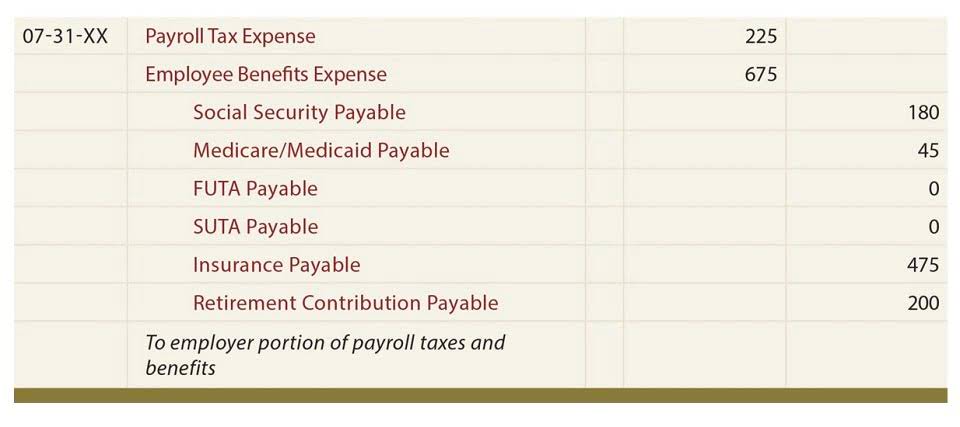Content

This is because taxes get due in one accounting period but are not paid in that period. Cash, And Cash EquivalentsCash and Cash Equivalents are assets that are short-term and highly liquid investments that can be readily converted into cash and have a low risk of price fluctuation. Cash and paper money, US Treasury bills, undeposited receipts, and Money Market funds are its examples. They are normally found as a line item on the top of the balance sheet asset. The rate of interest on investments and adjustment of the principal amount of investment each is applicable for income statements and balance sheets.
- For challenging sectors, such as junior mining or technology start-up, insurers may have specialist underwriters on staff who have a deep understanding of the industry.
- The Company is also exempt under the terms of FRS 8 ‘Related Party Disclosures’ from disclosing transactions with other members of the Home Retail Group.
- Alice knows what she paid for her education, but, sensibly, its real value is not its cost but its potential return, or what it can earn for her as she puts it to use in the future.
- This type of statement is also often referred to as a Profit and Loss Statement, or P&L.
- Auditors use the notes to determine if the accounting policies used are appropriate, properly applied, and are reflected in the reported results of the company.
Details of the remuneration of Directors are given in the auditable part of the Directors’ Remuneration Report and related matters, and were paid by another Group Company. An asset is not recognised to the extent that the transfer of economic benefits in the future is uncertain. Subsidiary CompanyA subsidiary company is controlled by another company, better known as a parent or holding company.
Quarterly Report Pursuant To Section 13 Or 15d
They provides necessary information about the financial activities to the interested parties. For example, a court appointed trustee may assert claims against current or former directors, alleging a breach of fiduciary duties if their activities are thought to have caused the insolvency. Lenders or vendors may also pursue their own claims alleging misrepresentation during a credit application process or even fraud. In addition, this note also typically Notes to Financial Statements includes a brief description of operations and may reference the organization’s subsidiaries or partnership ventures. We determine if an arrangement contains a lease at inception based on whether or not the Company has the right to control the asset during the contract period and other facts and circumstances. Our fourth interim reporting period and our fiscal year end on December 31 regardless of the day of the week on which December 31 falls.
- Assets Held For SaleAvailable for sale Securities are the company’s debt or equity securities investments that are expected to be sold in the short run and will are not be held to maturity.
- Notes present assertive and analytical information regarding financial statements.
- Various individuals and bodies use an entity’s financial statements to understand more about that entity.
- Materiality depends on the amounts involved and the amount so affected.
- In the case of a company, then the statement of change in equity shows how equity share has changed among all the shareholders.
- The convenience gained by having your bank, brokerage, tax preparer, and so on accessible to you or your data accessible to you wherever you are must be weighed against the increased exposure to data theft.
- Footnotes to the financial statements refer to additional information that helps explain how a company arrived at its financial statement figures.
Those stockholders are interested in receiving financial statements which report the results and financial position of the entire economic entity, which is all of the subsidiaries and the parent corporation. Common notes to the financial statements include accounting policies, depreciation of assets, inventory valuation, subsequent events, etc. Although the income statement and balance sheet provide measures of a company’s success, cash and cash flow are also vital to a company’s long-term success.
Preparing Financial Statements At The Cycle’s End
This financial statement is often tagged along in a group of other balance sheets. For illustration purposes, let’s take a look at the sample annual financial statement of Apple Inc. Notes present assertive and analytical information regarding financial statements.
The improved cash flow allowed her to make a down payment on a new car, invest in her 401, make the payments on her car loan, and still increase her net cash flow by a factor of ten. Ratios used to understand financial statement amounts relative to each other. But because creditors would rather be paid eventually than never, the bankrupt is usually allowed to continue to earn income in the hopes of repaying the debt later or with easier terms.
Fourthly, financial statements are intended to provide the base for tax assessments. Though they are used increasingly as the basis for the future by prospective investors and creditors, they are not intended to provide estimates of future economic activities and their effect on income and equity. Materiality depends on the amounts involved and the amount so affected. So, the material item should be disclosed separately whereas immaterial items may not be discussed separately but may be combined in a consolidated form in the published financial statement. For this purpose, benefit payments are recognized when due and payable in accordance with the benefit terms. The preference shares were allotted for cash and were paid up as to 30% (by virtue of the holder giving an understanding to pay up each share to such amount pursuant to section 738 of the Act). Final dividends proposed by the Board of Directors and unpaid at the year end are not recognised in the financial statements, until they have been approved by the shareholders at the Annual General Meeting.
The ninth type of note that may be found on the financial statements lists any contingent liabilities that may exist. A contingent liability is a liability that has not yet occurred, but the conditions are favorable for it to occur in the near future. An example of this is a lawsuit being filed against company A by company B. In this case, company A will need to list this contingent liability in the notes to the financial statements. There are ten common items that may appear in a company’s notes to the financial statements. The first thing that a company usually wants people to know is what they do, or what they make. It specifies the accounting policies used while constructing the financial statements like depreciation method, inventory valuation method, etc.
Annual Improvements
If you can copy the notes of your software program in which you prepared the notes to financial statements in the Windows clipboard, you can use the Paste (Ctrl+V) function to transfer the information to the NOTES form. In the NOTES form, copy the notes to financial statements that have been prepared. Seventhly, financial statements are prepares to provide information about the changes in net resources of the organization that result from profit directed activities.
For example, while valuing the unsold stock, someone prefers to apply FIFO method among other various methods (viz. LIFO, Weighted Average, Simple Average, etc.) for valuing unsold stock. You can understand this statement as a company’s outflow and inflow of cash. The company needs to have sufficient cash at hand to pay its expenses and purchase assets. While income statements convey information about whether the company made a profit, this statement figures if the company generated cash. Annual Financial statements report the financial position and performance of the entity for a specified period of 12 months. Such information is used by management, investors, lenders, and creditors to analyze the entity’s financial position to make important economic and financial decisions for the future growth of the entity.

The fundamental purpose of financial statements is to provide information to the stakeholders useful for making economic and financial decisions about the business. In the practical field, an accountant presents the explanations and analysis of financial statements through notes. It is to be narrated clearly whether accounting standards have property been followed in preparing financial statements. Sharon Barstow started her career in investment banking and then crossed over to the world of corporate finance as a financial analyst. She specializes in banking and corporate finance topics to include treasury management, financial analysis, financial statement analysis, corporate finance and FP&A. In addition to writing, she is the co-owner of a small dog bakery in rural Ohio. Giving information about employee benefits programs is another thing that notes to the financial statements might do, as well as listing any contingent liabilities.
Is It Possible To Have A Negative Net Income?
For this reason, the information in the footnotes is just as important as the information contained within the statements, particularly from a regulatory perspective. If the financial statements are error free, but there are errors within the notes, the auditor should issue negative remarks. All items of income and expense recognised in a period must be included in profit or loss unless a Standard or an Interpretation requires otherwise. [IAS 1.88] Some IFRSs require or permit that some components to be excluded from profit or loss and instead to be included in other comprehensive income. The next type of note that may be seen on the financial statements are those that confirm when financial statements are consolidated. Consolidated financial statements are financial statements that include the financial information for not only one company but also all of its subsidiaries. A cash flow statement is a financial statement that provides aggregate data regarding all cash inflows and outflows a company receives.
The Statement of Retained Earnings therefore uses information from the Income Statement and provides information to the Balance Sheet. Information that is specific to the employer is shown in bold, italics and brackets. This may be the name of the employer (for example), information from a prior year, or data from the data tables. For example, where the sample note says , use the number in the data tables from Table 1, Column C on your reporting unit’s row. The degree of importance that information disclosed in notes to financial statements should possess. The statement of Shareholder’s Equity reflects the movement of equity for an entity over a particular period. This document may include shareholder contributions, details about share capital, a breakdown of dividend payments, earnings per share, and more.
The significance of these relationships becomes even more important when evaluating alternatives for financial decisions. When you understand how the statements are related, you can use that understanding to project the effects of your choices on different aspects of your financial reality and see the consequences of your decisions.
Footnotes are also called supplementary notes that explain the figures and accounts contained in the company’s financial statements. For clarity purpose, points and information that aid a better understanding of the financial accounts such as balance sheet and income statement are supplied as footnotes. Reading the footnotes to the financial statements is important to having a clearer picture of how the company realized its figures and how certain accounts are generated. Financial statements are valuable summaries of financial activities because they can organize information and make it easier and clearer to see and therefore to understand. Each one—the income statement, cash flow statement, and balance sheet—conveys a different aspect of the financial picture; put together, the picture is pretty complete. The three provide a summary of earning and expenses, of cash flows, and of assets and debts. Current assets basically include cash, short- term investments and marketable securities, accounts receivable, inventory, and prepaid expenses.
Objective Of Financial Statements
These financial reports include audited financial statements, additional disclosures required by regulatory authorities, and any accompanying commentary by management. Basic financial statement analysis—as presented in this reading—provides a foundation that enables the analyst to better understand other information gathered from research beyond the financial reports. Also known notes to financial statements, footnotes, notes to accounts are supporting information that is usually provided along with a company’s final accounts or financial statements. Many such notes are required to be provided by law, including details related to provisions, reserves, depreciation, investments, inventory, share capital, employee benefits, contingencies, etc.
The Company is also exempt under the terms of FRS 8 ‘Related Party Disclosures’ from disclosing transactions with other members of the Home Retail Group. The concepts in the document are primarily intended to provide GASB with criteria to consistently evaluate future requirements for notes to financial statements in the standard-setting process.

They also may help stakeholders to understand the fundamental concepts underlying note disclosure requirements in future GASB pronouncements, according to a news release. Various individuals and bodies use an entity’s financial statements to understand more about that entity. In the United States, https://www.bookstime.com/ there are five different types of financial statements, which we have discussed in detail below. Assets Held For SaleAvailable for sale Securities are the company’s debt or equity securities investments that are expected to be sold in the short run and will are not be held to maturity.
Inventory Turnover
A third thing that the notes may tell users is how the company depreciates, or decreases, the value of assets over a certain time period. If, for the sake of better presentation, changes in accounting policies are required, it is specifically mentioned in the notes. Users have the most important things highlighted in the financial statements. They may or may not refer or may selectively refer to notes as per his requirements. Footnotes may also include information regarding future activities that are anticipated to have a notable impact on the business or its activities. Often, these will refer to large-scale events, both positive and negative. For example, descriptions of upcoming new product releases may be included, as well as issues about a potential product recall.
- Government and their agencies need financial information to regulate the activities of the enterprises/ industries and determine taxation policy.
- Inter-firm comparison may be misleading if the firms are not of the same age and size, follow different accounting policies.
- Policy, expected technology advancement is also stated.Shareholder’s capitalNotes to accounts generally represent the issue of shares, buyback programs, convertible shares, arrears, etc.
- Value Added is this profit generated by the collective efforts of management, employees, capital and the utilization of its capacity that is distributed amongst its various stakeholders.
Answers to these types of questions are help underwriters determine an organization’s D&O insurance risk and how to structure and price the insurance policy. Sales of our nonalcoholic ready-to-drink beverages are somewhat seasonal, with the second and third calendar quarters accounting for the highest sales volumes. The volume of sales in the beverage business may be affected by weather conditions. Where gains refer to items such as capital gains, and losses refer to capital losses, losses from natural disasters, etc. Statement of Cash Flows – summarizes sources and uses of cash; indicates whether enough cash is available to carry on routine operations. Include the following paragraph in your note disclosures under the Summary of Significant Accounting Policies heading.
European Union Formally Adopts Amendments To Ias 1 And Ias 8
Therefore, they are readily available in the income statement and help to determine the net profit. Accounting PolicyAccounting policies refer to the framework or procedure followed by the management for bookkeeping and preparation of the financial statements. It involves accounting methods and practices determined at the corporate level. Property, Plant And EquipmentProperty plant and equipment (PP&E) refers to the fixed tangible assets used in business operations by the company for an extended period or many years. Such non-current assets are not purchased frequently, neither these are readily convertible into cash.
Related Party Transactions
Since the corporation’s shares of stock are publicly traded, the consolidated financial statements must be audited by a registered firm of independent certified public accountants. In addition to US GAAP the external financial statements of a publicly-traded U.S. corporation must comply with the reporting requirements of the U.S. government agency, Securities and Exchange Commission . Among the many required reports is the Annual Report to the SEC, Form 10-K. The Form 10-K must include audited, comparative financial statements.
Statement Of Changes In Equity
Such assets are recorded at historical cost, which often is much lower than the market value. This is a requirement of the IFRS and gives greater context around the information contained in your other financial statement documents. For example, your assets may be listed in the balance sheet, but your note to financial statements document is where you will explain precisely what those assets are.

